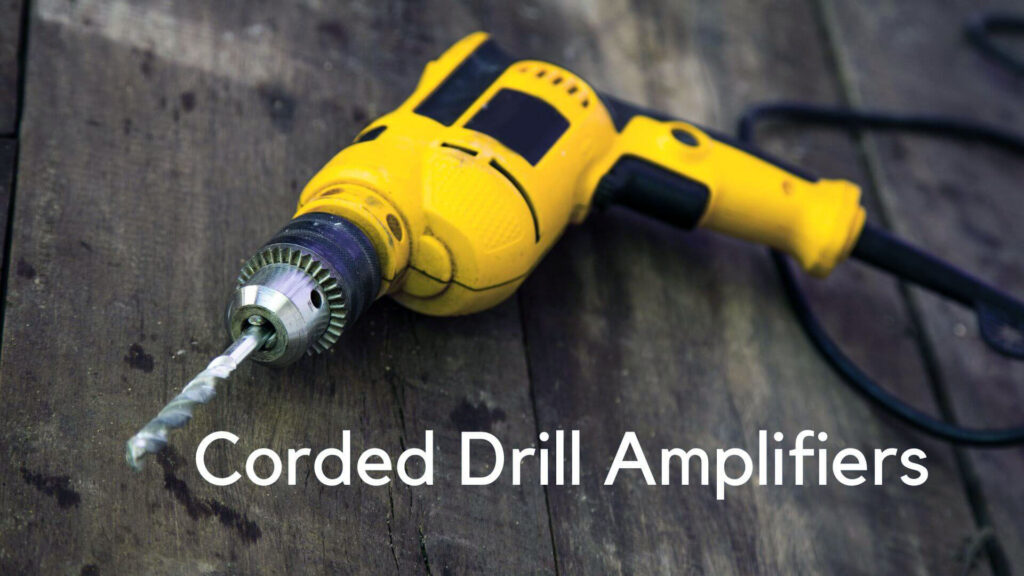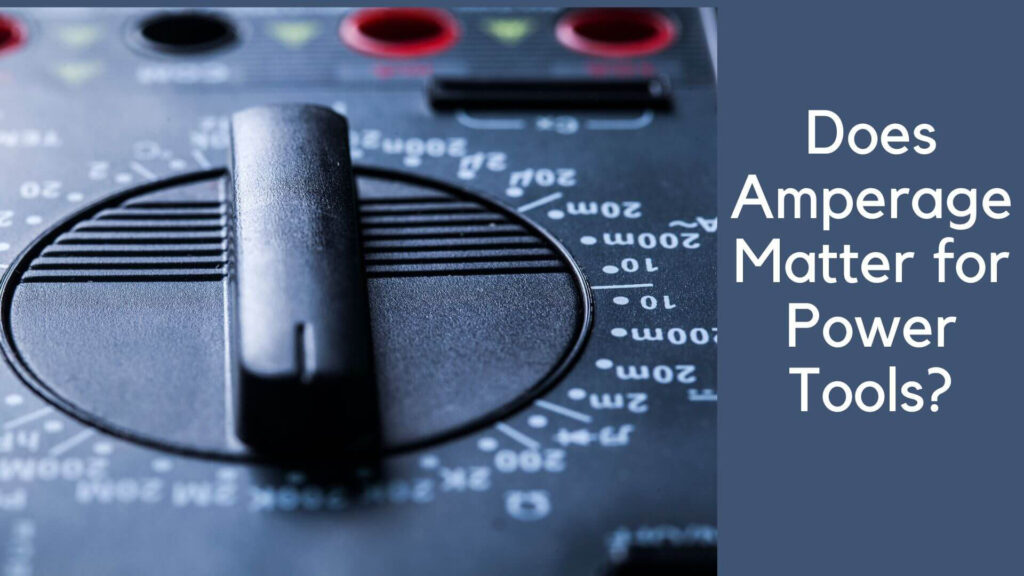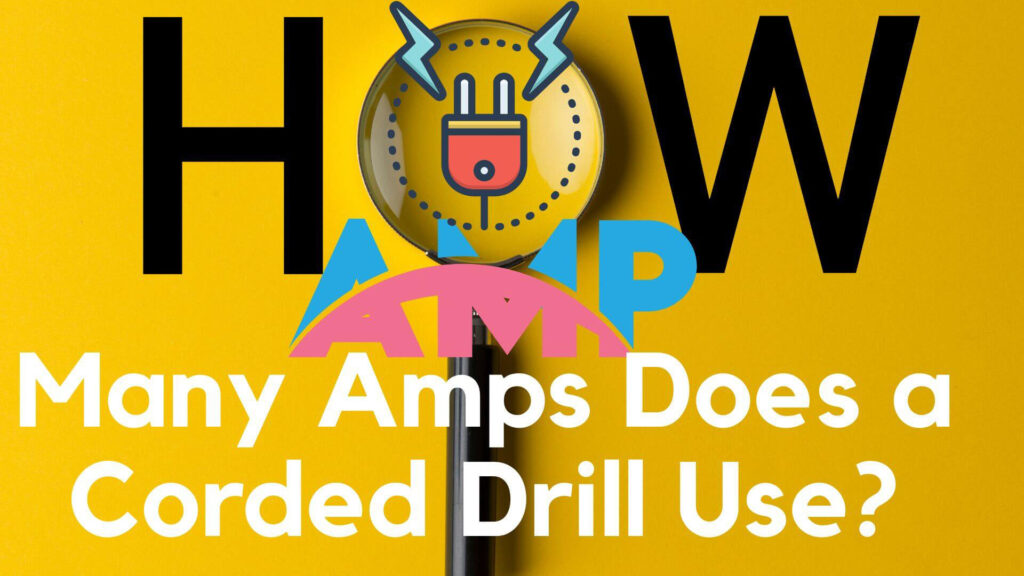When it comes to power tools, understanding their power consumption is essential for efficiency, safety, and performance. One of the most common queries is about how many amps a corded drill uses. This blog post delves into various aspects of amp ratings, their implications for corded drills, and related topics to help you make informed decisions.
Table of Contents
Types of Amp:
Amperage (amps) measures the electric current flowing through a circuit. Understanding the different types of amps can help you determine the power requirements for your corded drill:
1. Continuous Amps
Continuous amps refer to the amount of current a tool requires during regular operation. It is a crucial factor in determining the electrical capacity needed for the tool to function efficiently.
2. Peak Amps
Peak amps indicate the maximum amount of current drawn by a tool during start-up or under heavy load. This value can be significantly higher than the continuous amp rating and is essential for understanding the tool’s power demands.
3. Running Amps
Running amps are the average current drawn while the tool is operating at a steady state. This value typically falls between continuous and peak amps and provides a realistic estimate of the power usage during regular operation.
Corded Drill Amplifiers:
Corded drills typically range from 3 to 10 amps, depending on their intended use and design. Understanding these ratings can help you choose the right drill for your projects.

1. Light-Duty Corded Drills (3-5 Amps)
Light-duty corded drills usually have an amperage range of 3 to 5 amps. These drills are ideal for simple tasks like drilling into softwood, assembling furniture, or light DIY projects. They may not be suitable for heavy-duty applications or hard materials.
2. Medium-Duty Corded Drills (6-8 Amps)
Medium-duty corded drills typically range from 6 to 8 amps. These drills are versatile and can handle a wider range of tasks, including drilling into hardwood, soft metal, and even light masonry. They provide a balance between power and portability, making them suitable for home improvement projects.
3. Heavy-Duty Corded Drills (9-10 Amps)
Heavy-duty corded drills operate at 9 to 10 amps, offering the most power and performance. These drills are designed for professional use and can handle demanding applications, such as drilling into concrete, heavy steel, or large diameter holes.
Portable Amplifiers:
Portable amplifiers refer to devices that can boost the electrical capacity of your power source, allowing you to use tools that require higher amperage. These devices are particularly useful when working in areas with limited electrical capacity or when using multiple tools simultaneously.
1. Power Inverters
Power inverters convert DC (direct current) from batteries into AC (alternating current) suitable for powering corded drills and other tools. They can provide the necessary amps to run heavier-duty tools, especially in outdoor settings where electricity is not readily available.
2. Generators
Generators are another option for providing portable power. They can deliver higher amps and wattage, making them suitable for powering multiple tools or larger equipment simultaneously. When selecting a generator, it’s essential to ensure it can handle the total amperage required by your tools.
3. Extension Cords
Using the correct extension cord is vital for supplying sufficient amps to your drill. It is essential to choose a heavy-duty extension cord rated for the required amperage and length to prevent voltage drops, which can affect tool performance.
The Use of Amps in Corded Drills
Amps play a crucial role in the operation of corded drills. They indicate the amount of current flowing through the drill, which directly affects its performance and capabilities. Higher amperage ratings typically translate to more power, enabling the drill to handle tougher materials and tasks.
1. Power Output
The power output of a corded drill is calculated by multiplying the voltage (typically 120V in the U.S.) by the amperage. For example, a drill operating at 8 amps will have a power output of 960 watts (120V x 8A). Understanding this relationship helps users assess whether their drill can handle specific tasks.
2. Heat Generation
As amps increase, so does heat generation within the drill. High amperage can lead to overheating, especially if the tool is used for extended periods. It is essential to monitor the drill’s temperature and take breaks to prevent damage.
3. Tool Longevity
Using a drill with the appropriate amperage for your tasks can extend its lifespan. Using a tool with too low an amp rating for demanding applications may lead to premature wear and failure, while using a tool with too high an amp rating may cause overheating.
Does Amperage Matter for Power Tools?

Yes, amperage matters significantly for power tools, including corded drills. Here’s why:
1. Performance
The amperage of a drill determines its overall performance. Higher amperage tools can deliver more torque and are better suited for heavy-duty applications.
2. Versatility
A drill with a higher amperage rating can handle a wider variety of materials and tasks, making it more versatile for different projects.
3. Power Consumption
Understanding the amps required for your drill helps gauge energy consumption, ensuring you have an adequate power supply for uninterrupted work.
What Amps Does My Drill Need?
Determining the right amperage for your drill depends on the tasks you intend to perform. Generally, consider the following guidelines:
- For Light Tasks: If you plan to use your drill for light-duty tasks like hanging pictures or assembling furniture, a drill with 3 to 5 amps is sufficient.
- For Medium Tasks: For general DIY projects, including drilling into wood and plastic, a drill with 6 to 8 amps is recommended.
- For Heavy-Duty Tasks: If you intend to drill into concrete, heavy metals, or perform professional-grade work, opt for a drill with 9 to 10 amps.
Read More: How Many RPM is a Corded Drill?
How Much Power is Required For a Corded Drill?
The power required for a corded drill varies based on its amperage rating and the materials you’ll be drilling.
1. Power Calculation
To calculate the power needed for your drill, use the formula:
Power (Watts) = Voltage (Volts) x Amperage (Amps)
For example, a drill operating at 8 amps would require:
Power = 120V x 8A = 960 Watts
2. Continuous vs. Peak Power
Keep in mind that peak power requirements may differ during start-up or under heavy load. It’s essential to ensure your power source can handle both continuous and peak demands.
How Many Amps Does a Hammer Drill Need to Have?
Hammer drills typically require higher amperage due to their dual-action mechanism (rotary motion and hammering).
1. Recommended Amps
Most hammer drills operate between 7 to 10 amps. A drill with 7 amps is suitable for light masonry work, while a 10-amp hammer drill is better for heavy-duty tasks, such as drilling into concrete or brick.
2. Considerations for Usage
When selecting a hammer drill, consider both its amperage and the type of materials you’ll be working with. Ensure the drill can handle the demands of your projects without overheating or losing power.
FAQS about How Many Amps Does a Corded Drill Use?
How long can a corded drill run before it needs to be plugged in?
Corded drills do not run on batteries, so they can operate as long as they are plugged into a power source. However, it’s essential to take breaks to prevent overheating during extended use.
What is the maximum wattage that a corded drill can use?
The maximum wattage for a corded drill varies depending on the model and amperage. For example, a 10-amp drill at 120 volts can draw up to 1200 watts. Always check the manufacturer’s specifications for precise information.
What is the maximum torque that a corded drill can use?
The maximum torque of a corded drill is influenced by its design and motor capabilities. Higher amp drills typically offer more torque, making them suitable for tougher materials. Check the specifications for the specific torque ratings of the drill model.
What is the maximum speed that a corded drill can use?
The maximum speed of a corded drill is measured in RPM (revolutions per minute) and can range from 500 to 3000 RPM, depending on the drill model and application. Higher RPMs are suitable for drilling into softer materials, while lower RPMs are better for harder materials.
Conclusion
Understanding how many amps a corded drill uses is essential for selecting the right tool for your projects, ensuring efficiency, safety, and performance. The amperage rating affects everything from power output and heat generation to tool longevity.
By considering the type of work you’ll be doing and the specific requirements of your drill, you can make informed decisions that enhance your DIY experience or professional projects. Always refer to the manufacturer’s specifications for accurate information on amperage, power requirements, and performance capabilities. With this knowledge, you’ll be better equipped to handle any drilling challenge that comes your way!

Hey, I am MD Hrithik Hossain, I’m a huge fan of DIY crafts. My workshop is where I spend most of my spare time, and I’m always working on some project. To that end, I’d like to share some of my knowledge and experience with you in power tools, woodworking, and other specialized materials fabrication.
I will guide you with genuine knowledge that can assist you with deciding whether a drill is appropriate according to your requirements or not. If you want to find the best drill and know which type of drill is most suited for your needs, then I can guide you with my expertise. My passion lies in helping others find the correct products they need at an affordable price.


